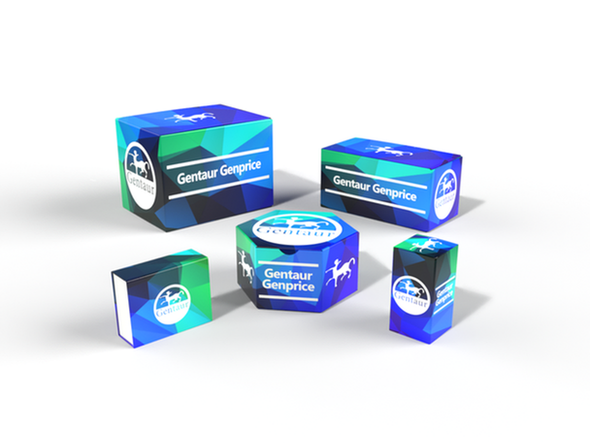Description
LGP2 Antibody | 4351 | Gentaur UK, US & Europe Distribution
Host: Rabbit
Reactivity: Human, Mouse, Rat
Homology: N/A
Immunogen: LGP2 antibody was raised against a 12 amino acid synthetic peptide from near the carboxy terminus of human LGP2.
The immunogen is located within amino acids 570 - 620 of LGP2.
Research Area: Innate Immunity
Tested Application: E, WB
Application: LGP2 antibody can be used for detection of LGP2 by Western blot at 1 - 2 μg/mL.
Antibody validated: Western Blot in rat samples. All other applications and species not yet tested.
Specificiy: At least four isoforms of LGP2 are known to exist.
Positive Control 1: Cat. No. 1465 - Rat Kidney Tissue Lysate
Positive Control 2: N/A
Positive Control 3: N/A
Positive Control 4: N/A
Positive Control 5: N/A
Positive Control 6: N/A
Molecular Weight: Predicted: 70 kDa
Observed: 75 kDa
Validation: N/A
Isoform: N/A
Purification: LGP2 Antibody is affinity chromatography purified via peptide column.
Clonality: Polyclonal
Clone: N/A
Isotype: IgG
Conjugate: Unconjugated
Physical State: Liquid
Buffer: LGP2 Antibody is supplied in PBS containing 0.02% sodium azide.
Concentration: 1 mg/mL
Storage Condition: LGP2 antibody can be stored at 4˚C for three months and -20˚C, stable for up to one year. As with all antibodies care should be taken to avoid repeated freeze thaw cycles. Antibodies should not be exposed to prolonged high temperatures.
Alternate Name: LGP2 Antibody: LGP2, RLR-3, D11LGP2, D11lgp2e, D11LGP2E, LGP2, Probable ATP-dependent RNA helicase DHX58, Probable ATP-dependent helicase LGP2
User Note: Optimal dilutions for each application to be determined by the researcher.
BACKGROUND: LGP2 Antibody: Anti-viral innate immune responses are triggered by pathogen-associated molecular patters (such as the accumulation of intracellular nucleic acids resulting from virus infections) and represent the first line of defense against numerous infectious organisms. The Toll-like receptors (TLR) 3, 7, 8, and 9 are expressed in immune cells and function as transmembrane pattern recognition receptors to detect foreign nucleic acids. Other proteins that play similar roles, such as RIG-1 and MDA5 are members of a CARD-helicase family and are expressed in the cytoplasm. A third protein, LGP2, is similar to RIG-1 and MDA5, except for lacking a homologous CARD domain. It is thought to act as an element of negative-feedback regulation of intracellular antiviral signaling.










